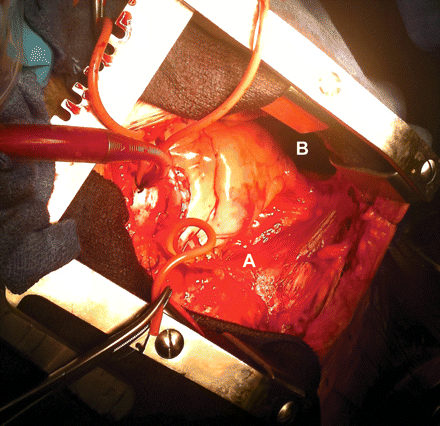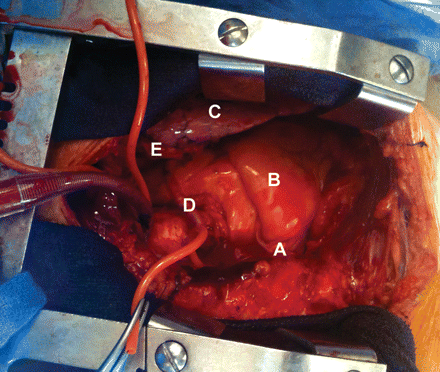-
PDF
- Split View
-
Views
-
Cite
Cite
Kristof De Brabandere, Jens Czapla, Emmanuel Callens, Francis Wellens, Coronary artery bypass surgery in a patient with congenital absence of the left pericardium, European Journal of Cardio-Thoracic Surgery, Volume 41, Issue 4, April 2012, Page e65, https://doi.org/10.1093/ejcts/ezr262
Close - Share Icon Share
A 66-year old male patient was referred to our centre because of unstable angina pectoris. A coronary catheterization revealed a significant three-vessel disease. Emergent coronary artery bypass surgery was performed. This procedure showed a complete congenital absence of the left pericardium (Figs 1 and 2). Post-operative stay was uneventful.

Intra-operative view. Right pericardium (A). Congenital absence of the left pericardium (prevalence between 1 in 10 000 and 1 in 14 000) (B). Notice the rotation of the heart to the left pleural cavity.

Intra-operative view. Right pericardium (A). Right ventricle (B). Left lung (C). Complete absence of the left pericardium. Aortovenous bypass (grafted onto two obtuse marginal artery branches and on the posterior descending artery) (D). Left internal thoracic artery (grafted on the LAD) (E).




